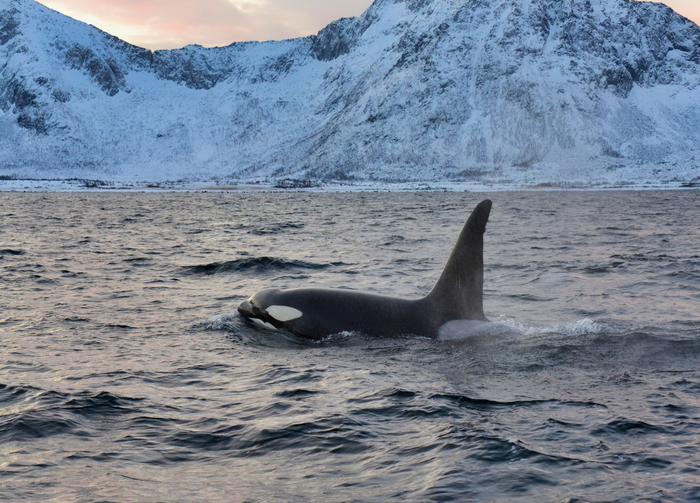Killer whales (also known as orcas) are intelligent predators. While it’s known that killer whales in the Pacific Northwest exploit widely different food types, even within the same region, we know much less about the feeding habits of those found throughout the North Atlantic. Thanks to a new technique developed by a research team led by McGill University, it is now possible to quantify, for the first time, the proportion of different prey that killer whales in the North Atlantic are eating by studying the fatty acid patterns in their blubber.

Credit: Rune Dietz
Killer whales (also known as orcas) are intelligent predators. While it’s known that killer whales in the Pacific Northwest exploit widely different food types, even within the same region, we know much less about the feeding habits of those found throughout the North Atlantic. Thanks to a new technique developed by a research team led by McGill University, it is now possible to quantify, for the first time, the proportion of different prey that killer whales in the North Atlantic are eating by studying the fatty acid patterns in their blubber.
In the largest study of its kind, this approach was used to look more closely at the diets of killer whale from the eastern and northern coasts of Canada all the way to northern Norway. It provides the most detailed overview of North Atlantic killer whales diets to date. As climate change leads to a northward redistribution of killer whales, the results have implications not only for the health and survival of these killer whales, but also in terms of potential impacts on sensitive species within Arctic ecosystems.
A new tool to keep track of shifting diets
“In a context of climate change, it becomes increasingly urgent to understand and be able to quantify killer whale diets and how they are changing so that we can foresee the potential impacts on local food webs,” says Anaïs Remili, a PhD candidate in the Department of Natural Resource Sciences at McGill University and the first author on a paper published in Journal of Animal Ecology. “By measuring the composition of the fatty acids of approximately 200 killer whales and of 900 of their prey of different species, we were able estimate the specific proportions of each prey species in the whales’ diets. This means that scientists can potentially keep track of any shifts in these diets in the future.”
Orca food habits vary – by region and individual
The team found that killer whales have very different diets throughout the North Atlantic. In some areas, killer whales prefer to consume other whales: belugas and narwhals in the Eastern Canadian Arctic and baleen whales and porpoises in Eastern Canada.
Killer whales feed predominantly on fish, especially herring in the Eastern North Atlantic (Norway, Faroe Islands, Iceland), and in the Central North Atlantic (Greenland) they primarily eat seals.
Interestingly, however, the McGill researchers also found that not all the whales in any given location feed on the same prey. For example, in the Eastern Canadian Arctic, half of the whales eat mainly belugas and narwhals, while the other half consume mainly ringed seals. In Greenland, killer whales consumed a mixture of all available prey. Lastly, in Iceland, the Faroe Islands, and Norway, most whales are herring eaters, but a small number of whales in Norway and Iceland also consume a substantial proportion of marine mammals such as porpoises and seals. It is the first time that researchers have been able to detect individual diet preferences with this level of detail.
“Quantifying the diets of killer whales and other top predators is crucial in a context of changing environments, because it can provide insights into how these animals adapt to shifts in their prey populations and habitat conditions,” adds Melissa McKinney, the senior author on the paper, an Assistant Professor in the Department of Natural Resource Sciences at McGill and the Canada Research Chair in Ecological Change and Environmental Stressors. “Our results also point to the need for further research on the ecology of the individuals since we found such large differences among individuals of the same populations.”
The study:
“Quantitative fatty acid signature analysis reveals a high level of dietary specialization in killer whales across the North Atlantic by Anaïs Remili et al. in Journal of Animal Ecology. DOI: https://doi.org/10.1111/1365-2656.13920
Journal
Journal of Animal Ecology
DOI
10.1111/1365-2656.13920
Article Title
Quantitative fatty acid signature analysis reveals a high level of dietary specialization in killer whales across the North Atlantic
Article Publication Date
14-Apr-2023




